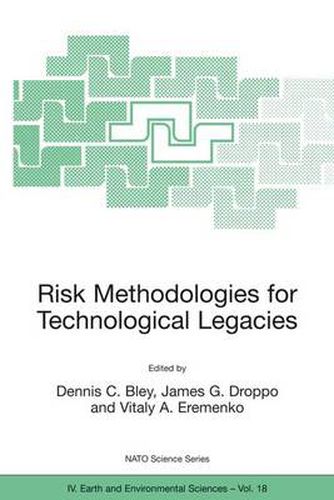Readings Newsletter
Become a Readings Member to make your shopping experience even easier.
Sign in or sign up for free!
You’re not far away from qualifying for FREE standard shipping within Australia
You’ve qualified for FREE standard shipping within Australia
The cart is loading…






This title is printed to order. This book may have been self-published. If so, we cannot guarantee the quality of the content. In the main most books will have gone through the editing process however some may not. We therefore suggest that you be aware of this before ordering this book. If in doubt check either the author or publisher’s details as we are unable to accept any returns unless they are faulty. Please contact us if you have any questions.
The projected costs of cleaning up the contaminated sites that are the legacy of the Cold War - just those in the US alone - have resulted in a movement to risk-based decision making for setting priorities. Risk can only be effectively controlled by a proper balance of three central concepts: risk analysis, risk perception and risk management. The relatively independent fields of risk analysis need drawing together in a single framework, identifying the reasoning underlying the seemingly disparate approaches and the gains to be had by bringing them together. Risk perception is the product of many factors in our lives, and cultural differences can have a significant impact on how we view risk and seek to control it. Risk management involves the decision maker selecting among alternative options. The book here focuses on facility risk management and human-centred risk management. Detailed information is provided on all three of these concepts; further definition is given to facility-centred and human-centred approaches to risk analysis and management. Part II of the book gives extensive inform ation on the legacies, risk perception and tools for analysing that risk. Part III presents detailed information on risk assessment programmes and methodologies, and Part IV provides details of future activities.
$9.00 standard shipping within Australia
FREE standard shipping within Australia for orders over $100.00
Express & International shipping calculated at checkout
This title is printed to order. This book may have been self-published. If so, we cannot guarantee the quality of the content. In the main most books will have gone through the editing process however some may not. We therefore suggest that you be aware of this before ordering this book. If in doubt check either the author or publisher’s details as we are unable to accept any returns unless they are faulty. Please contact us if you have any questions.
The projected costs of cleaning up the contaminated sites that are the legacy of the Cold War - just those in the US alone - have resulted in a movement to risk-based decision making for setting priorities. Risk can only be effectively controlled by a proper balance of three central concepts: risk analysis, risk perception and risk management. The relatively independent fields of risk analysis need drawing together in a single framework, identifying the reasoning underlying the seemingly disparate approaches and the gains to be had by bringing them together. Risk perception is the product of many factors in our lives, and cultural differences can have a significant impact on how we view risk and seek to control it. Risk management involves the decision maker selecting among alternative options. The book here focuses on facility risk management and human-centred risk management. Detailed information is provided on all three of these concepts; further definition is given to facility-centred and human-centred approaches to risk analysis and management. Part II of the book gives extensive inform ation on the legacies, risk perception and tools for analysing that risk. Part III presents detailed information on risk assessment programmes and methodologies, and Part IV provides details of future activities.